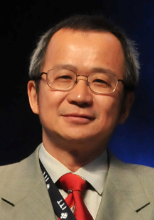ECE Seminar
Electromagnetic Models in Active and Passive Microwave Remote Sensing of Snow Water Equivalent and Soil Moisture
Add to Google Calendar

We describe the electromagnetic models that have been applied to
active and passive microwave remote sensing of soil moisture and snow water
equivalent. For soil moisture, the notable upcoming satellite mission is the NASA
SMAP (Soil Moisture Active and Passive) mission. SMAP is one of the first-tier missions
recommended by the Decadal studies and is scheduled to be launched in October
2014. For snow water equivalent, there are two satellite missions, the CoREH2O (Cold
Regions Hydrology High-Resolution Observatory) and the SCLP (Snow Cold Land
Process), that are being considered respectively by the European Space Agency and
NASA.
In microwave scattering by terrestrial snow, snow is considered a dense medium
with densely packed inhomogeneities. We describe the work of dense media
radiative transfer theory that incorporate coherent effects of scattering by densely
packed particles. Three approaches have been used, (i) the analytical theory of the
quasicrystalline approximation and correlated ladder approximation, (ii) the Foldy
Lax multiple scattering equations, and (iii) the bicontinuous media model with
discrete dipole approximation. Results of frequency and polarization dependence
of dense media scattering are illustrated and compared with experimental data of
measurements on terrestrial snow.
In the interactions of microwaves with vegetated surface, the microwave signatures
are determined by scattering of electromagnetic waves by random rough surfaces
and the vegetation canopy. The random rough surfaces are characterized by
Gaussian random process with exponential correlation functions. Numerical
solutions of Maxwell equations are calculated using Method of Moments,
accelerated by the UV/PBTG/SMCG method. Computed results of backscattering
of co-polarization and cross polarization are compared with experiments. Physical
models for the VV, HH and HV backscattering, taking into account the effects of rough
surface, volume scattering and double bounce, have been tabulated for a variety
of vegetated surfaces. Results have been validated against ground measurements
taken at SMAP core validation sites.
Leung Tsang received the Ph.D. degree from the Massachusetts Institute
of Technology. He has been a Professor of Electrical Engineering at the University
of Washington since 1983 and was the Chair of the Department in 2006-2011. He
was the President of IEEE Geoscience and Remote Sensing Society in 2006-2007
and the Editor-in-Chief of the IEEE Transactions on Geoscience and Remote Sensing
in 1996-2000. He is the co-author of 4 books: Theory of Microwave Remote Sensing
(Wiley-Interscience, 1985), Scattering of Electromagnetic Waves, vols. 1, 2 and 3.
(Wiley Interscience, 2000, 2001). He received the Pecora Award (cosponsored by
Department of Interior (USGS) and NASA) in 2012, and the IEEE Electromagnetics
Award in 2013.
 MENU
MENU 
